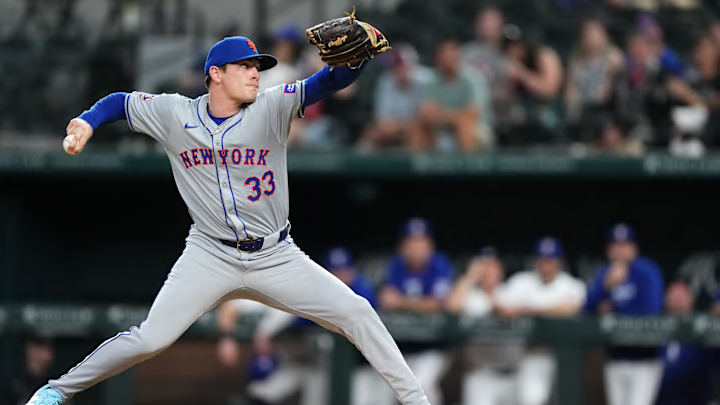The New York Mets didn’t sign up for sentiment when they brought Drew Smith back. They signed up for an option. Paying him $1 million to rehab through 2025 with a $2 million decision for 2026 attached was always a calculated bet that a familiar, homegrown bullpen piece would come out the other side of Tommy John ready to contribute on a clean, cost-controlled ticket.
Walking away from that option now — when Smith is tracking toward readiness — isn’t a casual paper move. It’s a flashing indicator of how aggressively David Stearns is prepared to treat every inch of his 40-man this winter, especially on injured, fringe, or fungible arms.
Mets cutting ties with Drew Smith shows no injured arm is safe
Look at the current staff board and it comes into even sharper focus. By declining Smith’s $2 million option after already eating the rehab year, the Mets effectively chose a roster spot over a relatively cheap lottery ticket in a bullpen that just watched Tylor Megill and Reed Garrett undergo Tommy John and project to miss 2026 entirely, with arbitration decisions still looming around them.
This is not a team clinging to sunk costs or hoping good vibes carry rehabbing arms into meaningful roles. It’s a front office signaling that if you can’t help in 2026, your grip on a 40-man seat is weak at best, and they’re willing to build fresh depth rather than defaulting to known names.
That’s where the Smith decision becomes more than a one-line transaction. Declining the option instantly frees a valuable 40-man roster spot in the tightest part of the calendar, just as the Mets juggle Rule 5 protections, waiver claims, depth trades, and a free-agent board that suddenly matters more with Pete Alonso, Edwin Díaz and others testing the market or facing option calls.
Even if some of those big-ticket choices were telegraphed in advance, combining them with a hard-eyed cut on a relatively modest reliever underscores a theme: no guarantees for partial seasons, no charity extensions for rehabs, no clogs in the pipeline if the medicals and math don’t line up.
At the same time, the door on Smith isn’t bolted shut, and that nuance is exactly how the Mets like to operate. Non-tendering or declining an option on an injured arm has become a standard front-office gambit: clear the guaranteed money and the roster spot now, then circle back later with a minor-league pact or incentive-heavy deal if the market and the health reports cooperate.
The more you zoom out, the more this looks like the opening phase of a larger purge rather than an isolated call. With Megill, Garrett, and other compromised arms crowding the ledger; with marginal position players and depth pieces bumping up against options and arbitration. The Mets are prepared to non-tender aggressively, to churn the bottom third of the roster, and to treat every slot as a live asset instead of a sympathy stash for what a player used to be.
And that’s the real message buried inside the Drew Smith headline: if this front office is willing to move on after paying to oversee his rehab, no one on the fringes should feel safe. Expect more tough calls, more surprise exits, and a winter defined less by nostalgic ties and more by a cold, competitive audit of who can help in 2026 and who’s just taking up oxygen on the 40-man.
